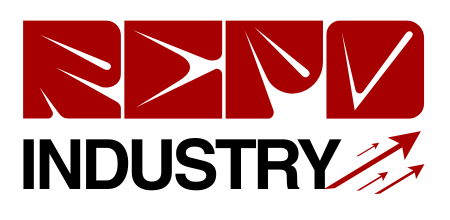Table of Contents
- Introduction to Zero Trust Network Access
- Why Remote Work Needs Enhanced Security
- Understanding the Principles of Zero Trust
- Implementing ZTNA in the Enterprise
- Benefits of ZTNA for Remote Teams
- Challenges in Adopting ZTNA
- Future of Work: Data-Driven Security Trends
- Conclusion: Transforming Workplaces with ZTNA
Introduction to Zero Trust Network Access
As the global shift towards remote working continues to accelerate, the need for robust and adaptable security frameworks has never been more urgent. Zero Trust Network Access (ZTNA) is gaining recognition as a critical solution in this domain. Unlike traditional network security models that presuppose trust within the network perimeter, ZTNA operates on a more stringent principle of “never trust, always verify.” This approach is particularly crucial in the current climate, where cyber threats rapidly evolve and become more sophisticated. By redefining how security is approached, several platforms demonstrate this practice by offering tools designed to facilitate secure, remote connectivity in a world where office and workplace boundaries are increasingly fluid and virtual.
Why Remote Work Needs Enhanced Security
The transition to remote work, while offering numerous benefits such as flexibility and cost savings, has posed significant challenges for organizations, particularly concerning security. Using potentially unsecured home networks for professional tasks exposes valuable company data to many risks. Without the centralized network controls typical in an office setting, employees’ devices become vulnerable entry points for cyber threats. Moreover, the increase in remote work has seen a parallel rise in cyberattacks, with malicious actors targeting remote employees’ networks. This has underscored the need for advanced security protocols like ZTNA, which operate on rigorous verification processes and ensure that anyone accessing company resources has been thoroughly vetted and authenticated. Companies such as Versa Networks have responded to these challenges by developing secure access solutions that help protect distributed workforces without relying on traditional perimeter-based security models. Such measures are vital in safeguarding sensitive information and maintaining the integrity of organizational operations.
Understanding the Principles of Zero Trust
Zero Trust employs a fundamentally different security philosophy by eliminating trust assumptions within a network environment. Every access attempt is scrutinized, and permissions are dynamically granted based on policies set forth by security experts. This means that all components of IT environments, including users, devices, and network interactions, are subject to continuous verification processes. Zero Trust also involves a combination of segmentation strategies, ensuring that network access is restricted to only those segments that are necessary for specific tasks. This minimizes the potential attack surface — even if a malicious actor gains access to one segment, their ability to move laterally within the network is severely restricted.
Implementing ZTNA in the Enterprise
For enterprises looking to implement ZTNA, careful strategy and methodical execution are key. The process begins with a comprehensive audit of digital assets to identify which systems and data require protection. Once mapped, implementing ZTNA involves segmenting networks to impose strict access controls. By adopting micro-segmentation, organizations can ensure that any potential threat is confined to a single network segment, reducing the risk of wider compromise. This segmentation approach allows enterprises to quickly prevent unauthorized access and detect and respond to potential breaches. It’s important to note that integrating ZTNA is not meant to replace existing security measures but to complement them, enhancing the organization’s overall security posture. Planning the transition in phases allows for seamless adaptation by employees and reduces potential disruptions.
Benefits of ZTNA for Remote Teams

For distributed teams, ZTNA provides significant benefits beyond just security. It enhances operational flexibility and efficiency by allowing employees to access resources from any location without sacrificing security standards. This is particularly vital in today’s digital age, where agility and the ability to respond to changing market conditions are crucial for maintaining competitive advantage. With ZTNA, employee productivity is bolstered by granting secure access explicitly tailored to job roles, ensuring that employees have the necessary tools without exposing the organization to unnecessary risks. Additionally, ZTNA can decrease overhead costs related to security management by reducing the complexity of access controls and providing a more straightforward, streamlined, and automated approach to resource access and monitoring.
Challenges in Adopting ZTNA
Adopting a Zero Trust architecture comes with its own set of challenges. Cost considerations include the initial investment in new technology and ongoing maintenance and training expenses. Integrating ZTNA with existing legacy systems can be daunting, potentially requiring significant changes to the IT infrastructure. However, these challenges can be mitigated through strategic planning and learning from organizations successfully implementing ZTNA, as explored in successful ZTNA case studies. Organizations are encouraged to start small, perhaps with pilot programs, to prove the concept and gradually expand the zero trust framework across their operations, capturing key learnings and making data-driven adjustments.
Future of Work: Data-Driven Security Trends
The ongoing evolution of working environments necessitates a forward-looking approach to security. Data-driven trends are shaping the future of workplace security, with advanced technologies like artificial intelligence and machine learning playing pivotal roles in bolstering defenses. These technologies enable faster detection of anomalous activities and can preemptively neutralize threats. By integrating AI/ML with ZTNA, organizations can harness predictive analytics to respond to and prevent potential security incidents. As digital ecosystems continue to burgeon, combining Zero Trust policies with adaptive, intelligent security analytics will become instrumental in defining resilient, future-ready business operations.
Conclusion: Transforming Workplaces with ZTNA
Adopting Zero Trust Network Access is pivotal for organizations aiming to effectively secure their remote working environments. By shifting the security paradigm from implicit trust to dynamic verification, ZTNA empowers businesses to protect their most valuable digital assets while supporting flexible and efficient remote work practices concurrently. As the digital landscape continues to transform, embracing and fully integrating the principles of Zero Trust will enhance organizational security and pave the way for innovative, agile, and competitive business strategies well into the future. As we navigate an increasingly interconnected world, ZTNA will be a cornerstone in creating secure and adaptable digital workplaces.











